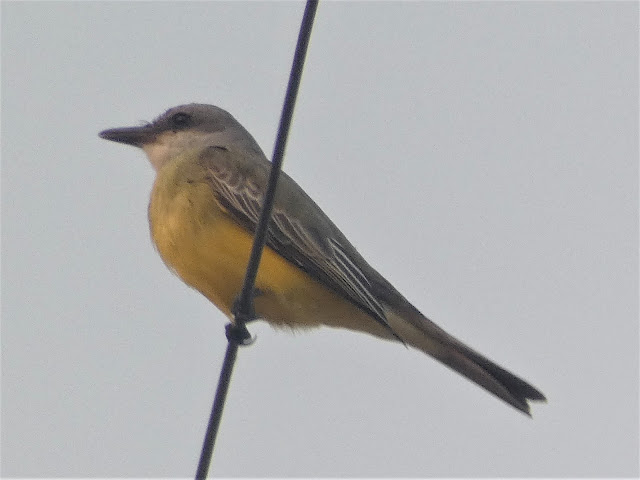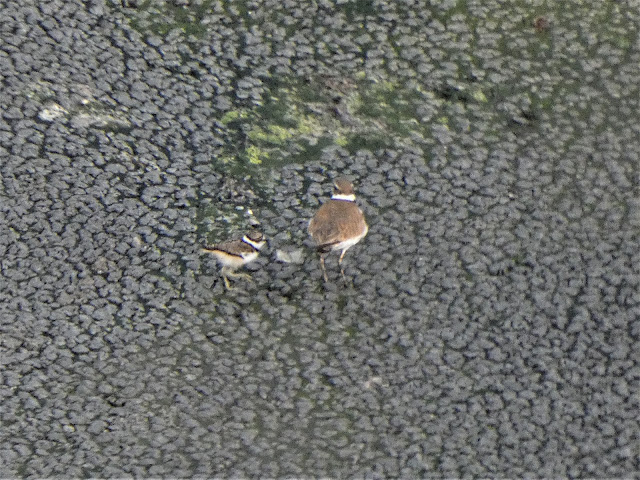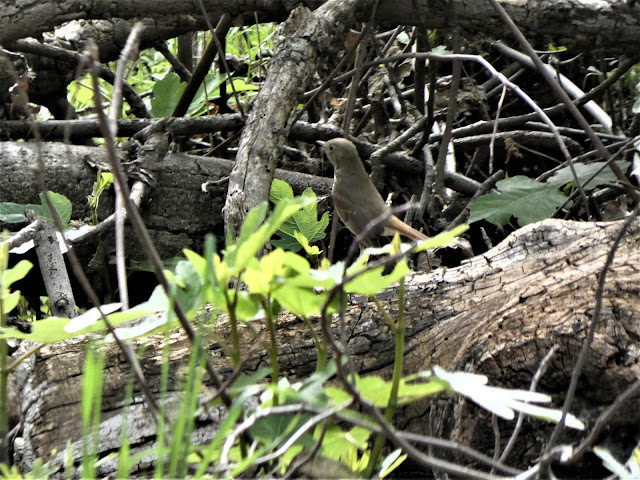We saw our first female ever in late November at Merced NWR. It was on the west side of the auto route, and was a surprise to us because most of the sightings have been on the southeast part of the refuge. And it was perched right along the side of the road, hardly 20 feet from our car. The female lacks the brilliant vermilion coloration, which can make it easy to miss. We didn't expect to see it again when we were there today, but there it was, almost in the same spot! It's more than a mile from where others have reported a mature male and female, and an immature male. I looked and looked but wasn't lucky enough to see the others.
The sole Vermilion Flycatcher in Stanislaus County is nothing if not consistent. He has occupied the same fence and shoreline along Dawson Lake (a small irrigation reservoir in the east part of the county) since late 2017, leaving during the summer months, but returning like clockwork in the fall. We saw him on December 16. The lake is on private property, so most pictures of this bird are from a great distance, as you can see below.
I cannot claim any specific knowledge as to why more of these birds have been sighted in the region lately, but it is a known fact that the climate is warming, and a great many species have been shifting to the north in response. The Vermilion Flycatcher is a subtropical species, being common in Mexico and Central America. Other subtropical species have become more abundant in the region, including the Blue Grosbeak and the Phainopepla. This is exciting for us local birders, but can be bad news for the species and the ecosystems they inhabit. Species move in response to availability of food sources and can cause disruptions in their new homes. The increasingly common Great-tailed Grackles for instance are aggressive feeders and have displaced other native species. In a warming world, there will be winners and losers, but mostly losers. Introducing aggressive new species into formerly stable habitats is rarely going to have a positive outcome.
 |
| Source: Vermilion Flycatcher Range Map, All About Birds, Cornell Lab of Ornithology |
Postscript: Make that eight Vermilion Flycatchers in Merced County. Ralph Baker saw one at the San Luis NWR on November 1!

















































